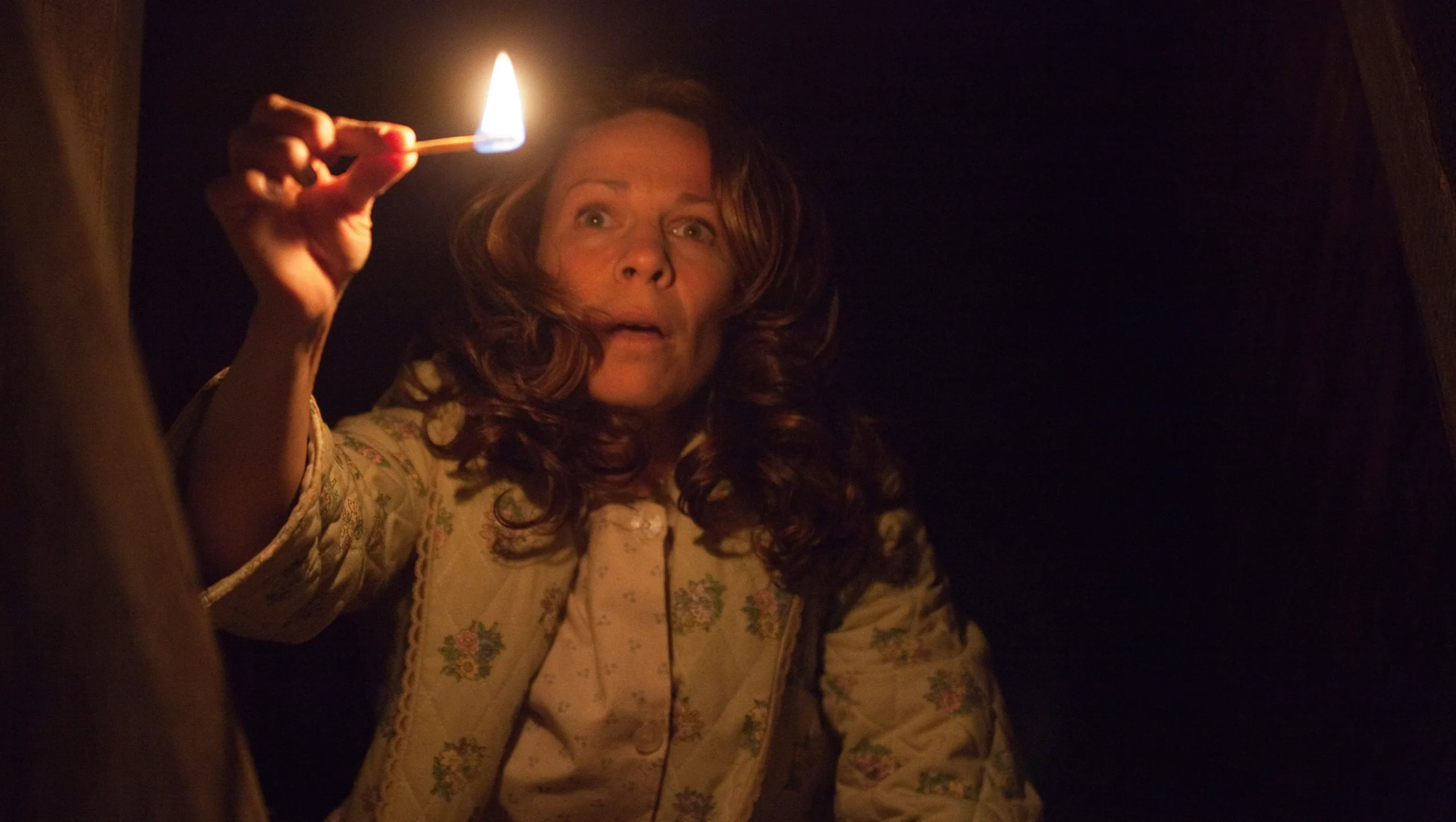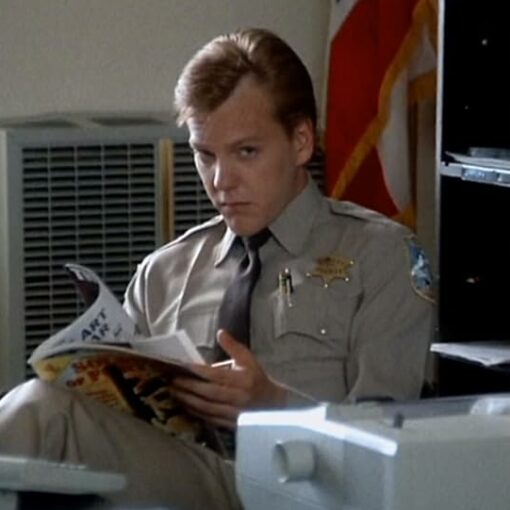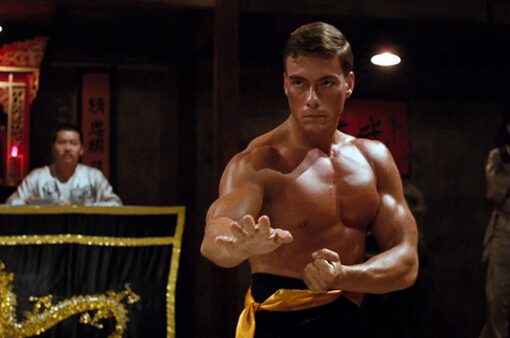There was a time when I thought that James Wan was a hack. In 2004, he failed to move me with his industrial indie Saw, the film that was responsible for igniting the torture porn craze that gripped the horror genre for a solid five years. While I’ll acknowledge that Saw offered a few clever surprises and a seriously wicked piece of rusty headgear, the film felt like a wannabe Seven that lacked the gloomy urban goth of David Fincher’s grotesque classic. It didn’t help that it was followed up with a string of pale and uninspired sequels (Wan only directed the first film) that stretched the premise to the breaking point. Wan offered up two more exercises in mediocre brutality (Dead Silence, Death Sentence) before he really made something worthwhile. In 2011, he made me a believer in his talent with his fiendish funhouse horror movie Insidious, a near perfect thrill ride that was tripped up by an overkill climax and a ghoul that looked like Darth Maul from Star Wars. It appears that Insidious was just a warm-up. A little over two years later, Wan returns to the horror genre with The Conjuring and he means business. The Conjuring doesn’t find Wan reinventing the haunted house horror movie formula, but it does find him at the top of his game and delivering the knock-out punch that horror fans have been waiting years for. Yes, this film is genuinely scary folks.
 The Conjuring picks up in 1971, with Roger (played by Ron Livingston) and Carolyn Perron (played by Lili Taylor) moving their happy family to an old farmhouse in Harrisville, Rhode Island. As the Perrons settle in to their rural palace, the family begins experiencing a number of strange occurrences. At first, their youngest daughter talks about a new imaginary friend, they hear eerie noises throughout the home, their dog is terrified to come near the house, birds fly into the windows, they find strange bruises on their bodies, and they wake up every morning to find their clocks frozen at 3:07 AM. As the activity increases and becomes more malevolent, the petrified Carolyn approaches local paranormal investigators Ed (played by Patrick Wilson) and Lorraine (played by Vera Farmiga) Warren about coming to their home and investigating the activity. At first the Warren’s are a bit hesitant, especially after their last case, which took a severe toll on Lorraine, but upon arriving at the Perron house, they uncover the home’s grisly past and quickly come to the realization that this may be their most horrific case yet, especially when the supernatural forces begin fighting back.
The Conjuring picks up in 1971, with Roger (played by Ron Livingston) and Carolyn Perron (played by Lili Taylor) moving their happy family to an old farmhouse in Harrisville, Rhode Island. As the Perrons settle in to their rural palace, the family begins experiencing a number of strange occurrences. At first, their youngest daughter talks about a new imaginary friend, they hear eerie noises throughout the home, their dog is terrified to come near the house, birds fly into the windows, they find strange bruises on their bodies, and they wake up every morning to find their clocks frozen at 3:07 AM. As the activity increases and becomes more malevolent, the petrified Carolyn approaches local paranormal investigators Ed (played by Patrick Wilson) and Lorraine (played by Vera Farmiga) Warren about coming to their home and investigating the activity. At first the Warren’s are a bit hesitant, especially after their last case, which took a severe toll on Lorraine, but upon arriving at the Perron house, they uncover the home’s grisly past and quickly come to the realization that this may be their most horrific case yet, especially when the supernatural forces begin fighting back.
Proudly sporting the “based on a true story” badge, The Conjuring finds Wan refusing to hide behind this fatigued gimmick. He could have peppered his film with the same old lazy jump scares and then argued in an interview that the film is scary because it supposedly really happened, but he resists at nearly every single turn. There are loud bangs and there certainly are plenty of sudden jolt scares, but for each easy “gotcha,” Wan balances it out with a nerve-frying moment of bloodcurdling intensity. He starts out small, with faint bumps, thumps, footsteps, and bangs that would make Robert Wise smile. He then graduates to poltergeist activity, with the Perron girls getting yanked out of their beds while they sleep, doors slamming on their own, people getting thrown across the room, and Carolyn getting violently shoved down the cellar stairs. When Wan shifts his attention to the full-on manifestations, The Conjuring takes a bit of a hit, mostly because the spirits seem a bit too familiar. They have the usual gray skin, blackened eyes, and dusty period clothing, all something that you might have spotted in Insidious. A few of them are eerie, especially the young boy that appears in the music box mirror, but for the most part, you wish that Wan would have left them in the shadows. Thankfully, they don’t take too much away from the film.
 While the first half of The Conjuring acts as a chilly ode to haunted house classics like The Haunting and The Amityville Horror, the second half of the film becomes heavily indebted to demonic horror films of the 1970s like The Exorcist. While nothing comes close to the horror we saw in William Friedkin’s classic, The Conjuring certainly doesn’t go soft on us. The climax is usually where these types of horror films collapse on themselves, mostly because the filmmaker is under the impression that they have to outdo themselves and bring the story home with a deafening bang. Wan was certainly a victim of this on Insidious with his maroon nod to famed Italian horror director Dario Argento, but on The Conjuring, he fights the urge to go over the top. The climax here is fabulously tame, with only a few special effects that keep us from totally buying into that whole “based on a true story” thing. There is some bloody barf, nasty burns, and demonic howls that even Linda Blair’s Regan would chuckle at, but Wan never lets the film slip. He puts several innocent lives at stake and he even threatens the sanity of our heroes, who have already been pushed to the brink once before. I’ll be damned if you won’t be holding your breath.
While the first half of The Conjuring acts as a chilly ode to haunted house classics like The Haunting and The Amityville Horror, the second half of the film becomes heavily indebted to demonic horror films of the 1970s like The Exorcist. While nothing comes close to the horror we saw in William Friedkin’s classic, The Conjuring certainly doesn’t go soft on us. The climax is usually where these types of horror films collapse on themselves, mostly because the filmmaker is under the impression that they have to outdo themselves and bring the story home with a deafening bang. Wan was certainly a victim of this on Insidious with his maroon nod to famed Italian horror director Dario Argento, but on The Conjuring, he fights the urge to go over the top. The climax here is fabulously tame, with only a few special effects that keep us from totally buying into that whole “based on a true story” thing. There is some bloody barf, nasty burns, and demonic howls that even Linda Blair’s Regan would chuckle at, but Wan never lets the film slip. He puts several innocent lives at stake and he even threatens the sanity of our heroes, who have already been pushed to the brink once before. I’ll be damned if you won’t be holding your breath.
While Wan’s expert direction certainly makes The Conjuring a winner, the film’s stars do a remarkable job seeming natural and authentic for the camera. Taylor is spot on as the sweet Carolyn, a loving housewife who oozes affection for her family. She shares many wonderful moments with Livingston’s Roger, a down-to-earth nice guy trucker who is powerless to protect his family. Taylor and Livingston work overtime to make us really like them and their hard work pays off when the spooks come knocking. While Taylor and Livingston hold their own, they take a back seat to Farmiga and Wilson, who elevate their real life paranormal investigators to horror movie heroes for the ages. Farmiga is on fire as Lorraine, a levelheaded clairvoyant who fights the urge to scream bloody murder when one of the manifestations gets right in her face. She is immensely likable, especially when her motherly affection comes forth. Wilson’s Ed doesn’t emit the warmth that Farmiga does, at least not at first. It takes some time to dig into him, as he is perpetually all business in his lectures and interviews, only softening when his young daughter comes calling. Rounding out the cast is Shannon Kook as Warren’s techie assistant Drew, who gets a chance to play hero at the end of the film, and John Brotherton as Brad, a skeptical local cop here simply to add a bit of unnecessary comic relief.
 While there certainly are a few little things that The Conjuring could have done without, the film is just way too strong where it counts. The scares are not always accompanied by loud music queues and there is a heavy reliance on atmosphere to keep us on the edge of our seats. The terror is consistently held and the moments that threaten to become cliché are thrown off to keep us uneasy about what Wan will do to us next. The Perron household is convincingly done up to seem old and aging, all yellowing walls, big heavy doors, and long hallways shrouded in shadows. The outside seems frozen in a perpetual autumn, complete with a blackened pond out back, dead leaves blanketing the ground, and a gnarled tree that was perfect for a satanic suicide. It is clear that Wan understands that the house itself is as much of a character as the flesh and blood ones we are invested in. The nods to past horror classics are all slyly placed and Wan even dares to work in a tip of the hat to Alfred Hitchcock’s apocalyptic masterpiece The Birds. He does effectively play with the “found footage” craze a bit, giving it a retro edge that feels oddly fresh.
While there certainly are a few little things that The Conjuring could have done without, the film is just way too strong where it counts. The scares are not always accompanied by loud music queues and there is a heavy reliance on atmosphere to keep us on the edge of our seats. The terror is consistently held and the moments that threaten to become cliché are thrown off to keep us uneasy about what Wan will do to us next. The Perron household is convincingly done up to seem old and aging, all yellowing walls, big heavy doors, and long hallways shrouded in shadows. The outside seems frozen in a perpetual autumn, complete with a blackened pond out back, dead leaves blanketing the ground, and a gnarled tree that was perfect for a satanic suicide. It is clear that Wan understands that the house itself is as much of a character as the flesh and blood ones we are invested in. The nods to past horror classics are all slyly placed and Wan even dares to work in a tip of the hat to Alfred Hitchcock’s apocalyptic masterpiece The Birds. He does effectively play with the “found footage” craze a bit, giving it a retro edge that feels oddly fresh.
Overall, The Conjuring is carefully crafted in vein of 70s horror films (get a load of that gloriously retro opening credit sequence) and offers up enough moments that will sear themselves into your nightmares for the rest of your life. In a time when the horror genre finds itself unsure over how to scare the audience silly, Wan reminds it that simplicity is key. Grade: A





